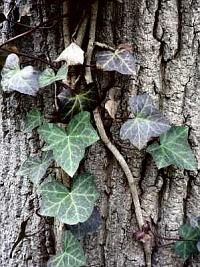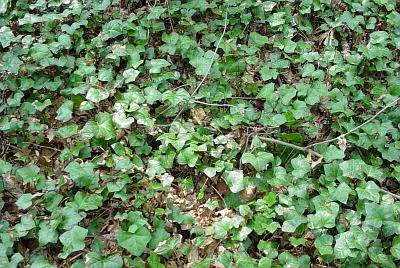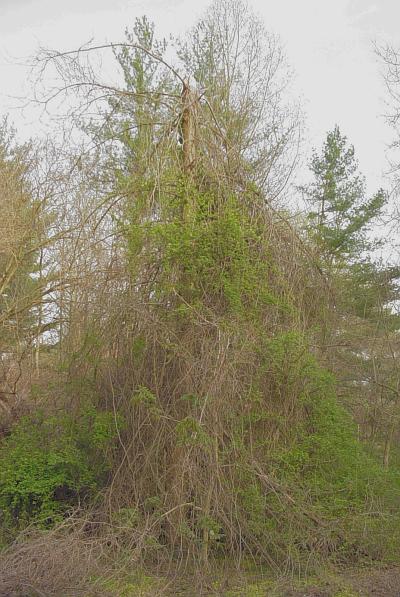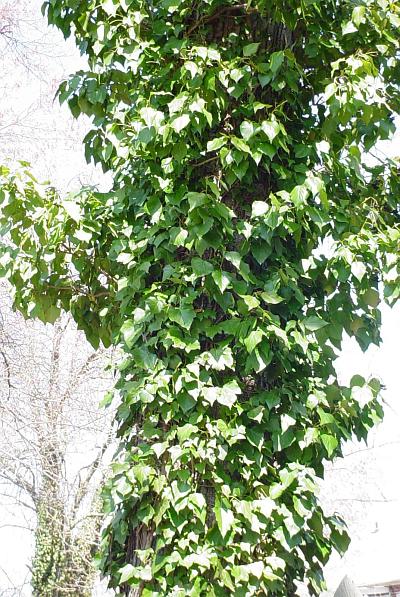

is Harmful
Acknowledgements
ENGLISH IVY
Hedera helix
Hedera is the Latin word for ivy;
helix means winding around.



Identification
Look-Alikes
Why English Ivy
is Harmful Removing English Ivy
Notes of Interest
References &
Acknowledgements |
ENGLISH IVY
|

|
Nothing grows among the ivy on the right of the dirt path, but various species grow on the left where any invading ivy was removed before it became established. Photo taken June 2003. When English ivy predominates, other plants tend to disappear. Birds and mammals are forced to move on to find food and appropriate cover.

 Among the plants crowded out are tree seedlings. This creates a gap in tree generation expected to last as long as the ivy remains.
Among the plants crowded out are tree seedlings. This creates a gap in tree generation expected to last as long as the ivy remains.
 Older ivy adds considerable weight to a tree, especially when ice forms in winter storms. The weight of vines alone is enough to snap a tree, as happened here to a bald cypress in an abandoned baseball field at Colesville Road during the winter of 2004. In this case the main vine was porcelain berry.
Older ivy adds considerable weight to a tree, especially when ice forms in winter storms. The weight of vines alone is enough to snap a tree, as happened here to a bald cypress in an abandoned baseball field at Colesville Road during the winter of 2004. In this case the main vine was porcelain berry.
 Bark covered with ivy stays wet longer and gets little air circulation. The Ivy Removal Website based in Oregon, where ivy is more destructive than here, states that "Loss of host tree vigor, evident within a few years, is followed by death a few years later."
Bark covered with ivy stays wet longer and gets little air circulation. The Ivy Removal Website based in Oregon, where ivy is more destructive than here, states that "Loss of host tree vigor, evident within a few years, is followed by death a few years later."